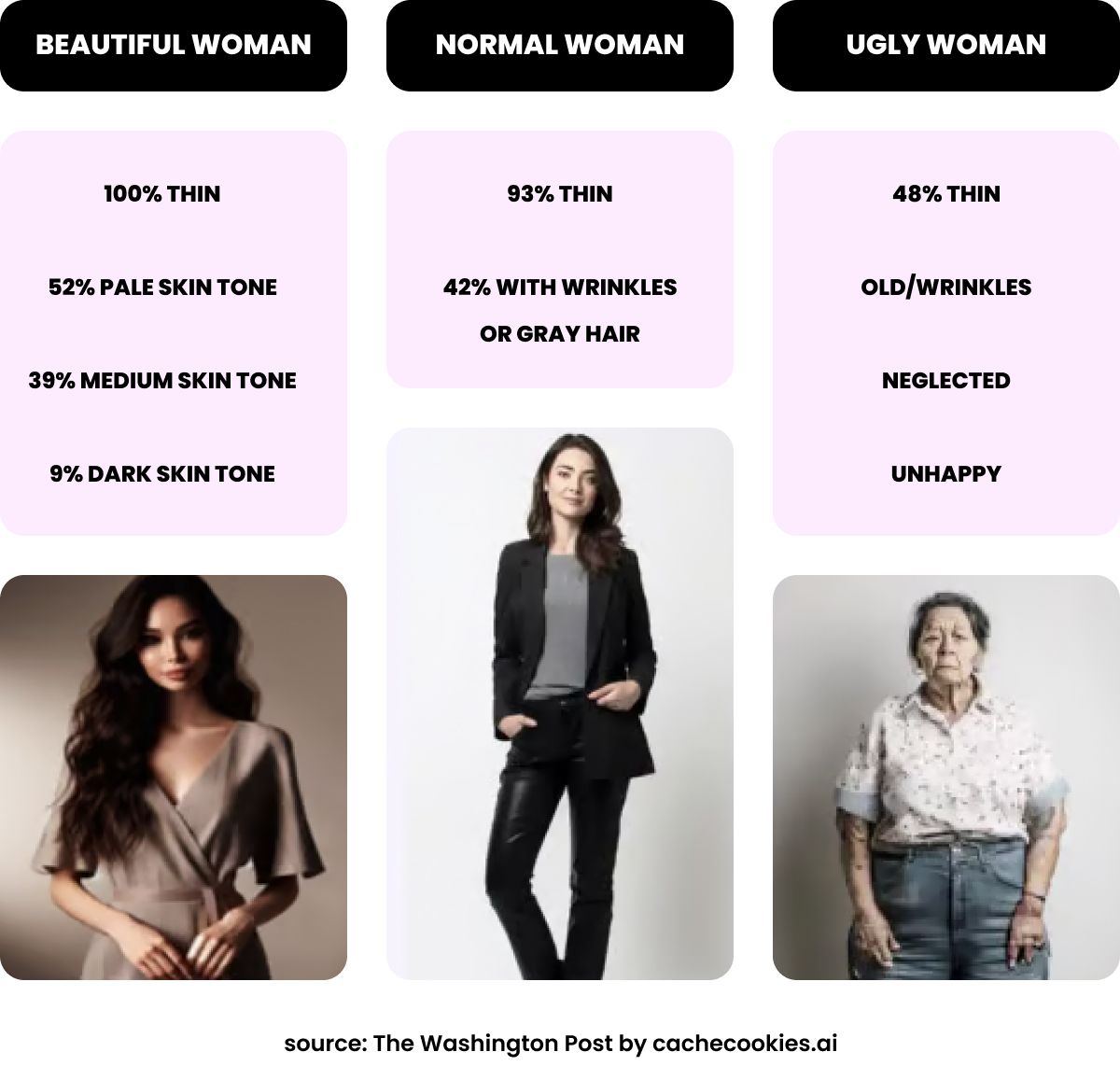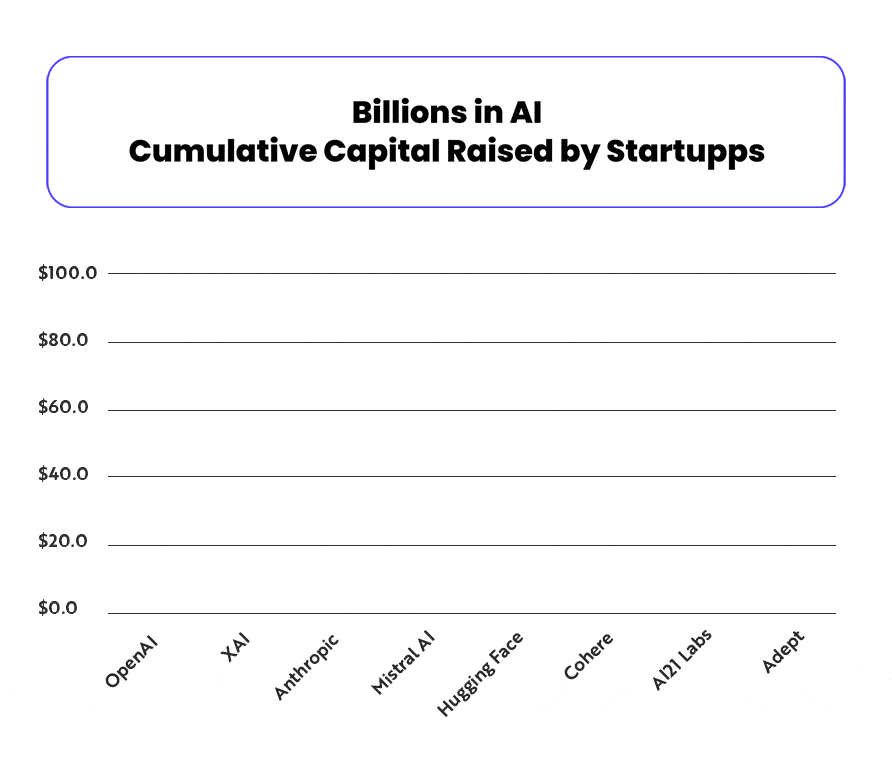- Cache Cookies AI
- Posts
- AI, AI, who is the fairest one of all?🪞🤔
AI, AI, who is the fairest one of all?🪞🤔
$6,000,000,000 to "Understand the Universe"

AI, AI, who is the fairest one of all?🪞🤔
$6,000,000,000 to "Understand the Universe"

Welcome, humans.
Cache Cookies delivers your weekly dose of groundbreaking tech news, cool apps, brain-boosting knowledge, the latest on AI, and the lowdown on AI's wild side.
What You Need to Know About AI this week
AI and Female Beauty: Are We Narrowing the Standard? 💄🪞🤔
Elon Musk's xAI Raises $6 Billion to Challenge OpenAI and "Understand the Universe” 🌌
AI's Shocking Energy Bill: Will Data Centers Outconsume Japan by 2026? 🔌🤯
Read Time: 4 minutes
AI BEAUTY BIAS
AI, AI, who is the fairest one of all?

A revealing study by The Washington Post delved into how image generators define female beauty standards, uncovering a concerning trend:
DALL-E : Favors thin women with pronounced makeup and medium skin tones (62%).
Midjourney : Showcases elegantly dressed women with fair skin, flowing dresses, and plunging necklines (90%).
Stable Diffusion: Also prefers thin women in flowing dresses but offers slightly more diversity in skin tones, with 18% of images featuring darker shades.
Disturbingly, when prompted to generate images of "fat women," these AI tools consistently produced images of thin women, revealing a deep-seated bias. The analysis further exposed a problematic association between ugliness and larger bodies, as well as negative facial expressions or old age. Stereotypes of "housewives" were also prevalent in the images.

As a mother of three pre-teens, this issue is particularly alarming. I worry about the impact these unrealistic beauty standards will have on my children's self-perception and relationships. Will my sons seek out partners who conform to these narrow ideals? Will my daughter strive for an unattainable perfection?
By favoring unrealistic and homogeneous beauty ideals, these AI tools can negatively impact self-perception and self-esteem, leading to perpetual discontent, lack of confidence, and body image disorders. We must avoid repeating the past mistakes of companies like Meta (formerly Facebook) that have contributed to these issues. Additionally, a UNESCO report highlights the risks of normalizing verbal abuse and harassment towards women, as evidenced by studies on user behavior with voice assistant software like Siri.
Despite acknowledgments from companies like DALL-E / OpenAI about the potential negative impact of their AI models, the widespread adoption of these technologies primarily in marketing and sales (33% of companies) threatens to undermine progress made towards diversity and inclusion in society.
AI, AI, tell me why I'm not the fairest of them all?
The answer lies in the data used to train these AI models. They learn from millions of images and captions, often sourced from the internet, which is rife with biases. Moreover, the teams developing these AI tools are predominantly white and male from middle to upper classes, further perpetuating these biases. If flawed or biased data is fed into a machine learning system developed by a homogeneous team, the result will inevitably be biased and unrepresentative: "Garbage in, garbage out."
AI, AI, tell me where are the women?
According to the World Economic Forum, only 30% of AI professionals are women globally, and this figure is even lower in Switzerland (less than 10% of women work in the digital sector overall). Gender biases in AI systems can hinder their effectiveness and pose risks for businesses. A diverse workforce is better equipped to identify and mitigate these biases, making gender diversity crucial for the advancement of AI. Increasing the representation of women in AI is, therefore, essential.
GENERATIVE AI
xAI Raises $6 Billion to "Advance Understanding of the Universe"
xAI boldly proclaims on its website, "Discover the answers to life, the universe, everything." This is no joke – their answer is Grok, an AI chatbot available to X Premium+ subscribers since November 2023. Grok represents Elon Musk's direct response to ChatGPT, a product of OpenAI, which he co-founded in 2015 but left in 2018 due to a reported power struggle with current CEO Sam Altman. Musk has since been a vocal critic of ChatGPT, accusing it of being too left-leaning. With the prospect of Elon Musk potentially becoming a policy advisor to Donald Trump, Grok could indeed emerge as a stark counterpoint to ChatGPT.
Despite that sentiment towards Musk is shifting (to learn more on this, listen to this excellent podcast from Kara Swisher), he has successfully raised $6 billion in Series C funding for xAI. This investment brings the company's valuation to $24 billion, positioning it as a direct competitor to OpenAI, valued at $86 billion. Notably, Musk secured investments from prominent players like Sequoia Capital, Andreessen Horowitz, and a fund with ties to the Saudi royal family.

source: The Economist, chart: Cache Cookies
Can Mr. Musk compete with OpenAI? He certainly believes so.
Musk's 2022 acquisition of Twitter, now rebranded as X, provides xAI with a treasure trove of human-generated data, crucial for training AI systems to interact with people. Additionally, footage from Tesla's camera-equipped cars could potentially be used to feed xAI's models (yes, all your X posts and Tesla data could be used in the training model). Through a partnership with Oracle, xAI has access to specialized AI servers equipped with the necessary chips for machine learning algorithms. On top Musk aims to build a massive supercomputer, a "gigafactory of compute," by late 2025. This project, requiring 100,000 AI chips to power the next version of Grok, rivals similar efforts by OpenAI and Microsoft.
📜 WEEKLY QUOTE

Although the generative AI boom is still in its early stages, projections about the resulting surge in energy demand are already alarming. The International Energy Agency, a leading global forecaster, predicts a staggering potential doubling of data center energy use by 2026, equivalent to the current consumption of Japan, the world's fourth-largest economy. In America, data centers are expected to be responsible for a third of new electricity demand over the next two years. Rene Haas, CEO of chip design company Arm, went further, estimating that AI data centers could consume a quarter of all American electricity by the end of the decade, a significant increase from their current share of 4% or less. For a deeper dive into this issue, check out this article in The Economist.
PROMPT OF THE WEEK 🏆
Ready to transform your Excel data into actionable insights? 📈 This week's prompt is your key to unlocking the full potential of ChatGPT's latest data analysis features.
Prompt: Let's Dive into Advanced Data Analysis
It's as simple as uploading your Excel file directly from your computer, Google Drive, or Microsoft OneDrive. ChatGPT instantly understands your data and suggests various analysis options to help you uncover hidden patterns and trends. Ask questions in plain language, and watch as ChatGPT delivers interactive visualizations and insightful summaries.
JOB OPPORTUNITIES
That's it for now! Want more tasty AI insights? Visit our website and connect with us on Instagram, LinkedIn @Mila and @Zeynep. While you're there, consider spreading the word – share Cache Cookies with all your friends and colleagues who also like to stay sharp!







